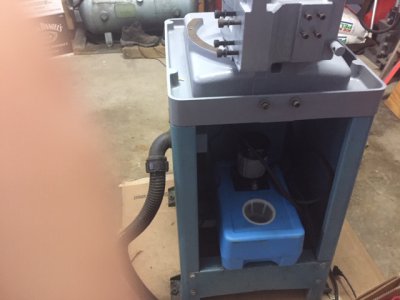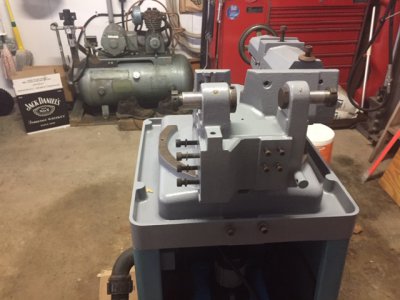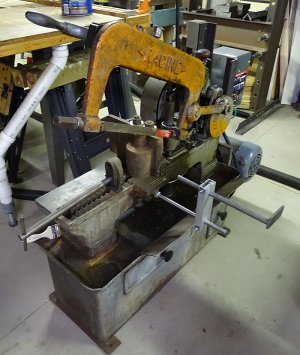- Joined
- Apr 14, 2014
- Messages
- 3,584
Your mill uses a reservoir and pump system similar to my Baileigh cold saw. This saw also has a screen in the coolant return trough to catch the majority of the swarf before the coolant returns to the tank. I like the idea of adding a cover to minimize the evaporation.My coolant reservoir has this little filter built in:
View attachment 422576
I added a plexiglas sheet and a seal to reduce evaporation:
And here is the sponge I added at the bottom of the chip/coolant tray where the coolant return is:
Two of my other saws have coolant systems, but neither has a useful filter. They both have large coolant tanks with partitions about 2/3 the height of the tank. The coolant returns to the opposite compartment it's pumped out of. Returning swarf settles in the return side of the tank. Coolant doesn't flow to the pump side of the tank until side it reaches the top of the partition in the return side.
Here are a couple pics of the Baileigh saw and coolant system. The first picture shows the tank and built-in filter basket. If you look closely at the second picture you can see the return coolant port in the center. At this point there is no screen installed of the trough.
The third picture is the Racine power hacksaw. The return tank is behind the long horizontal door. The pump is behind the smaller door at the rear of the machine. If you look closely, you can see a coarse screen by the paint brush that supposedly will keep the larger swarf from entering the tank. It's sort of a moot point in that all the saw swarf is small enough to pass through the screen. The final picture shows Startrite horizontal bandsaw. Like the power hacksaw it has a 2-part tank in the center of the base, and a screen in the tray above it. Also like the hacksaw the screen is all but useless for filtering out the swarf.
Attachments
Last edited:





